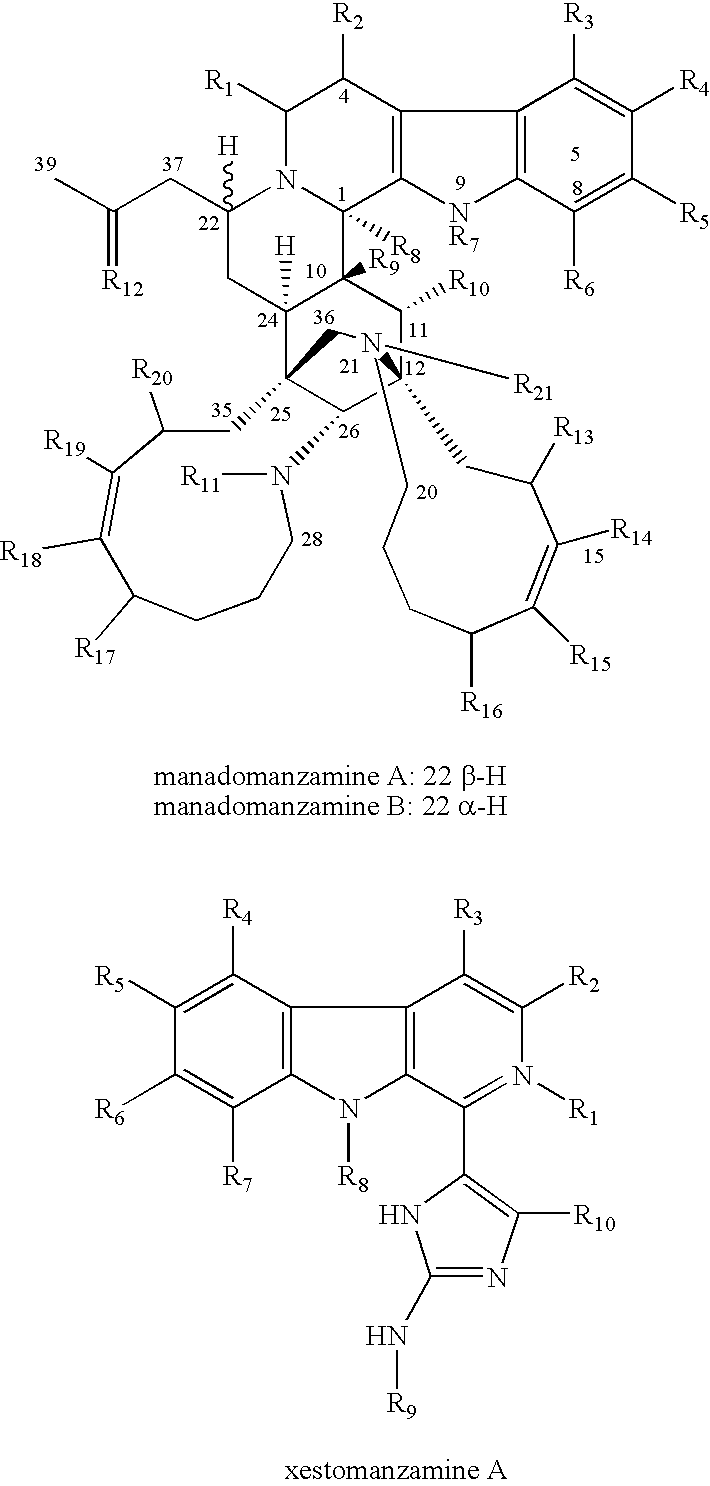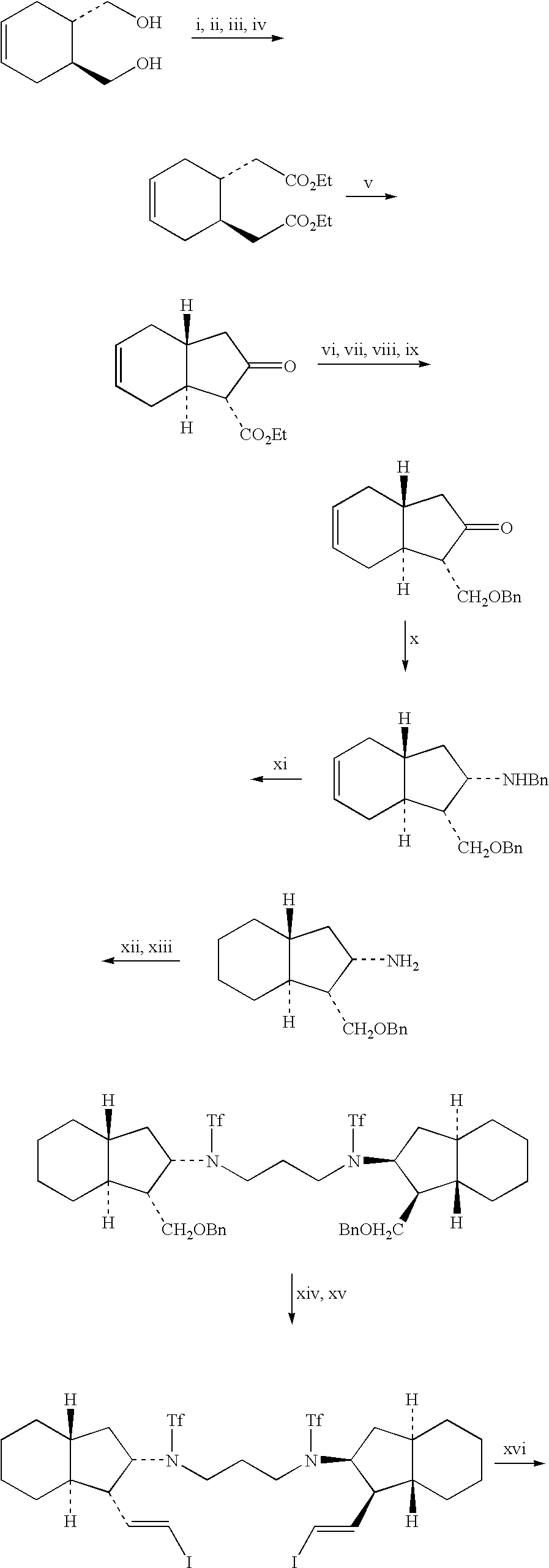Methods of treating disease through the administration of a manzamine analog or derivative
a manzamine analog or derivative technology, applied in the field of manzamine analog or derivative treatment methods, can solve the problems of weakened immune systems, faltering attempts, and hiv positive individuals being more susceptible to i>p. falciparum /i> and becoming more symptomatic, so as to improve the potency of manzamines, improve the effect of malaria resistance and significant activity
- Summary
- Abstract
- Description
- Claims
- Application Information
AI Technical Summary
Benefits of technology
Problems solved by technology
Method used
Image
Examples
Embodiment Construction
[0013] The manzamines are complex, polycyclic, marine-derived alkaloids first reported by Higa and coworkers in 1986 from the Okinawan sponge genus Haliclona. See, Sakai, R.; Higa, T.; Jefford, C. W.; Bernardinelli, G. “Manzamine A; An Antitumor Alkaloid From a Sponge,”J. Am. Chem. Soc. 1986, 108, 6404-6405. These compounds possess a fused and bridged tetra- or pentacyclic ring system that is attached to a β-carboline moiety. Since the first report of manzamine A, an additional forty manzamine-type alkaloids have been reported from a number of sponge genera (see, Hu, J. F.; Hamann, M. T.; Hill, R.; Kelly, M.; The Manzamine Alkaloids in “The Alkaloids: Biology and Chemistry” Edited by Geoffrey Cordell and Published by Elsevier June 2003).
[0014] The isolation of the manzamine alkaloids from a diversity of unrelated species provides strong evidence for a microbial origin for these metabolites including the manadomanzamines and papuamines. Manzamines exhibit a diverse range of bioactiv...
PUM
| Property | Measurement | Unit |
|---|---|---|
| concentration | aaaaa | aaaaa |
| resistance | aaaaa | aaaaa |
| Concentration | aaaaa | aaaaa |
Abstract
Description
Claims
Application Information
 Login to View More
Login to View More - R&D
- Intellectual Property
- Life Sciences
- Materials
- Tech Scout
- Unparalleled Data Quality
- Higher Quality Content
- 60% Fewer Hallucinations
Browse by: Latest US Patents, China's latest patents, Technical Efficacy Thesaurus, Application Domain, Technology Topic, Popular Technical Reports.
© 2025 PatSnap. All rights reserved.Legal|Privacy policy|Modern Slavery Act Transparency Statement|Sitemap|About US| Contact US: help@patsnap.com



